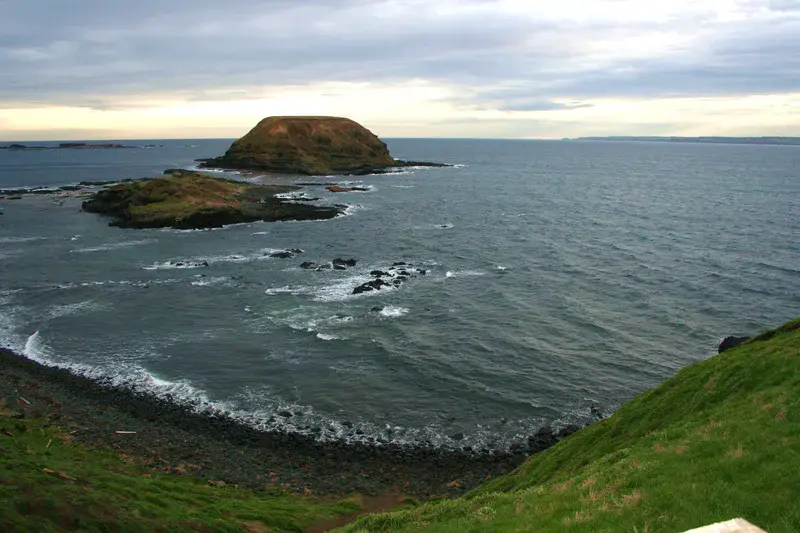
The Nobbies (Phillip Island)
by Antonio Jordán, University of Seville, Sevilla, Spain
First, in English:
The Nobbies on Phillip Island, Australia, are striking remnants of ancient volcanic activity that date back to the Early Cenozoic. These basaltic formations were sculpted by lava flows that cooled and hardened over time, then gradually eroded by the relentless force of wind, waves, and salt spray. The result is a rugged coastal landscape of cliffs, sea stacks, and tide-cut platforms that embody dynamic geomorphological processes still at work today.
Geologically captivating, The Nobbies also serve as a vital ecological sanctuary. The headlands and offshore islets provide crucial nesting and roosting habitats for seabirds such as Chroicocephalus novaehollandiae (Silver Gull) and Ardenna tenuirostris (Short-tailed Shearwater). The surrounding waters host colonies of Arctocephalus pusillus doriferus (Australian Fur Seal), and notably, Phillip Island is world-renowned for its colony of Eudyptula minor (Little Penguin). These charismatic birds, the smallest penguin species, use the area's dunes and rocky crevices as burrows, returning from the sea at dusk in a daily "penguin parade" that fascinates thousands of visitors and serves as a symbol of local conservation efforts.
This convergence of volcanic geology and rich biodiversity makes The Nobbies not only a site of scientific interest but also a living testament to the resilience and adaptation of species..
Ahora, en español:
Los Nobbies, en la Isla Phillip (Australia), son espectaculares vestigios de una antigua actividad volcánica que se remonta al Cenozoico temprano. Estas formaciones basálticas se originaron a partir de flujos de lava que se enfriaron y solidificaron con el tiempo, y que luego fueron erosionadas de forma constante por el viento, las olas y el rocío salino. El resultado es un paisaje costero escarpado de acantilados, monolitos y plataformas intermareales que reflejan los procesos geomorfológicos dinámicos aún activos hoy en día.
Además de su valor geológico, los Nobbies actúan como un santuario ecológico fundamental. Los promontorios y los islotes cercanos ofrecen hábitats clave para la anidación y el descanso de aves marinas como Chroicocephalus novaehollandiae (gaviota plateada) y Ardenna tenuirostris (petrel de cola corta). Las aguas circundantes albergan colonias de Arctocephalus pusillus doriferus (foca australiana), y especialmente, la Isla Phillip es mundialmente conocida por su colonia de Eudyptula minor (pingüino azul o pingüino enano). Esta especie, la más pequeña de los pingüinos, utiliza las dunas y las grietas rocosas como madrigueras, regresando del mar al atardecer en un desfile diario que atrae a miles de visitantes y simboliza los esfuerzos locales de conservación.
La convergencia entre la geología volcánica y la rica biodiversidad convierte a los Nobbies en un lugar de enorme interés científico y en un testimonio vivo de la adaptación y la resiliencia de las especies.
Categories
Location
- Oceania (238)
- Australia and New Zealand (224)
- Australia (96)
- Exact location (145.1107 E, -38.5193 S)
Tags
Colours
Image properties
2496 × 1664 px;
image/jpeg; 909.9 KB
Camera:
Canon EOS 350D
Taken on 11
July
2009
Submitted on 4 June 2012
Licence
Creative Commons Attribution-NonCommercial-ShareAlike 3.0 Unported (CC BY-NC-SA 3.0)
Credit
Antonio Jordán (distributed via imaggeo.egu.eu)
Share
Appreciate
Report